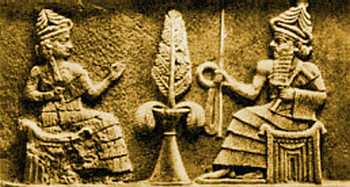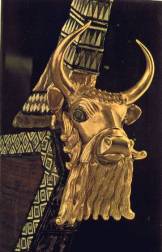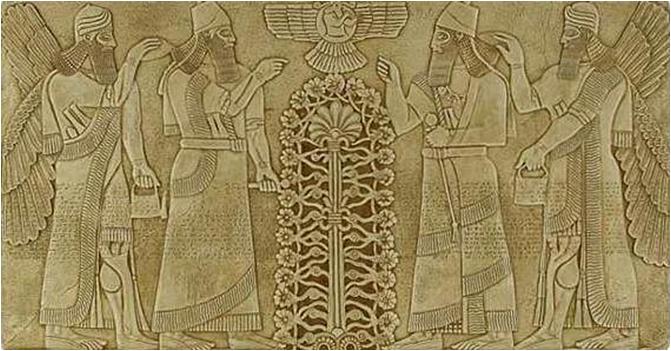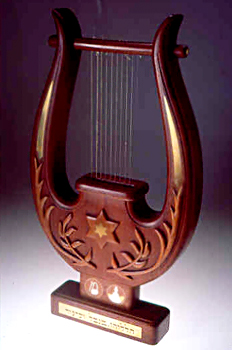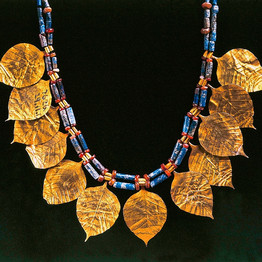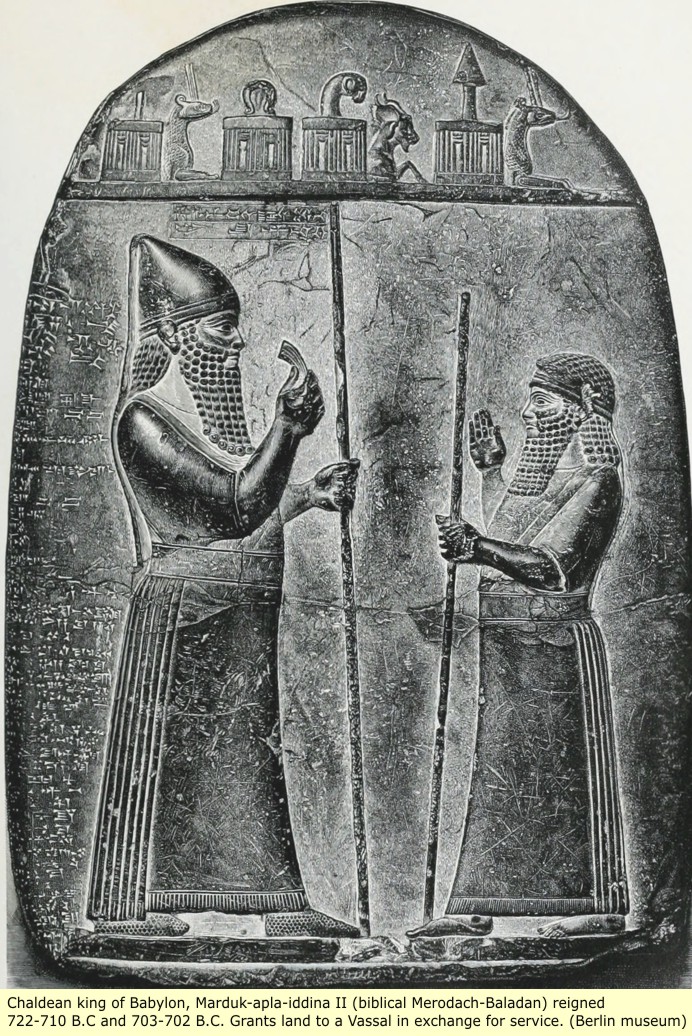How to install the app on iOS
Follow along with the video below to see how to install our site as a web app on your home screen.
Note: This feature may not be available in some browsers.
You are using an out of date browser. It may not display this or other websites correctly.
You should upgrade or use an alternative browser.
You should upgrade or use an alternative browser.
The Sumerian civilisation
- Thread starter The SC
- Start date
The SC
ELITE MEMBER

- Joined
- Feb 13, 2012
- Messages
- 32,233
- Reaction score
- 21
- Country
- Location


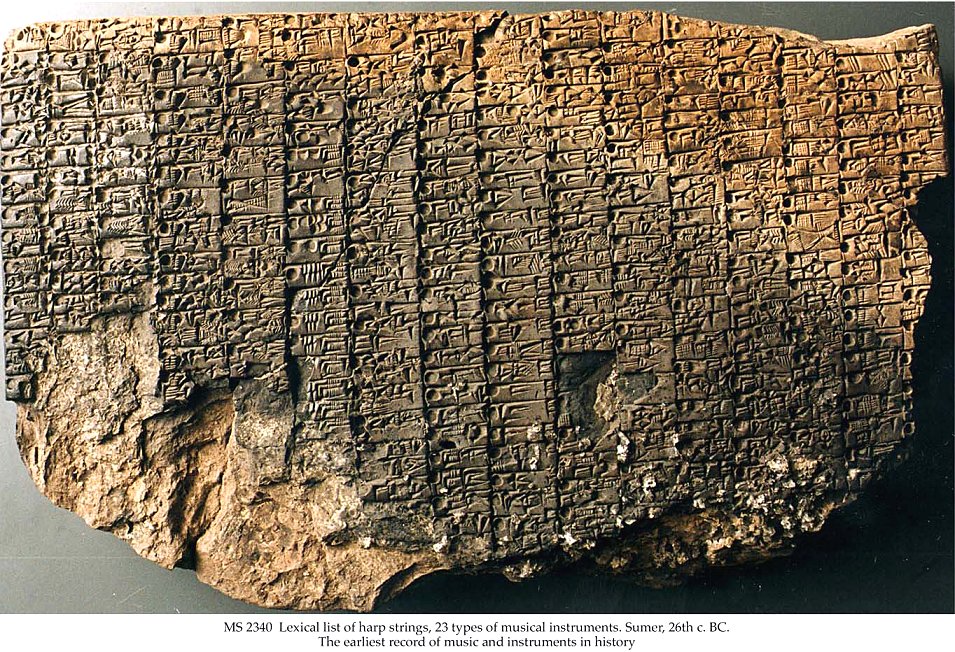
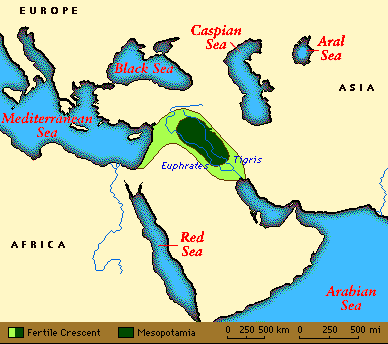
Cradle of Civilization
Known as the "cradle of civilization", Mesopotamia served as the site for some of the world's earliest settlements. It occupied the area between the Tigris and Euphrates rivers that now constitutes the greater part of Iraq. The Sumerian civilization, which began in the region in about 3500 BC, built a canal system and the world's first cities.
Sumerian Language - language of the peoples of the ancient kingdom of Sumer in Mesopotamia. Its vocabulary, grammar, and syntax do not appear to be related to those of any other known language. The oldest language preserved in writing, Sumerian was written in cuneiform script. Its earliest records date from about 3000 BC in southern Mesopotamia; after about 2000 BC it was no longer spoken, having been replaced by Akkadian or Assyro-Babylonian, but it continued in use as a literary language until cuneiform writing died out (c. 1st century BC).
There are four recognized periods of Sumerian:
Archaic Sumerian (3100-2500 BC)
Old or Classical Sumerian (2500-2300 BC)
New Sumerian (2300-2000 BC)
Post-Sumerian


The SC
ELITE MEMBER

- Joined
- Feb 13, 2012
- Messages
- 32,233
- Reaction score
- 21
- Country
- Location

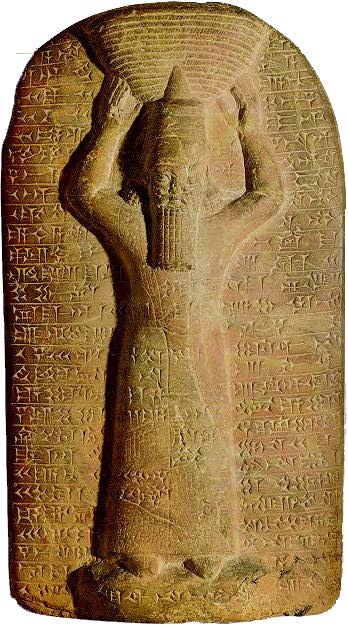
-------------------------------------------------------------------------------------------------------------
Another view on the Sumerian civilisation:
Unravel the mysteries of Sumer ancient civilization originated in the Middle East, the scientific minds of the entire planet unsuccessfully trying for a long time. The only reliable set of data is the fact that the first Sumerian civilization began about 450,000 years ago. The rest of the story of this highly developed culture is covered with darkness. Now archaeologists know that in Southern Mesopotamia, in the area of Mesopotamia came from nowhere Sumerian civilization, from the beginning had its own language, script and outstanding knowledge in mathematics, astronomy and other sciences, including: Ternary System account, and Fibonacci numbers. Knowledge of the current level of chemistry and genetic engineering.
- Development of a jurisprudence and debugged system of government. Unique information on the origin, structure and development of the Solar System. In Sumerian images of the solar system, all known to modern science, the planets revolve around the sun, although the precise confirmation of this in the history of the world of astronomy had been received recently. Where did the ancient Sumerians was this information? Sumerian representations of the structure of the solar system there is only one difference from "our": the presence of a huge additional planet between Mars and Jupiter, named Nibiru in the Sumerian texts. According to Sumerian chronicles the orbit of the planet is an elongated ellipse and once in 3600 years intersects with the Solar System.
The next intersection is on their calendar is expected to be between 2100-2160 years. The records of the Sumerians lived on the planet Nibiru highly substantive giant growth (women about 4 meters, the men about 5), called "" with a lifespan of up to 360 000 years of earthly measures. There is information about the origin of man. Sumerian manuscript Details tell the artificial creation of genetic engineering in the kind of homo sapiens (based on the primacy of blood) as the gold slaves for the inhabitants of Nibiru, the uprising of slaves and to separate them in a separate race, with the right live on planet Earth. Sumerian teachings about the origin of the Solar System is based on an event called "celestial battle" big accident, which happened about 4 billion years ago and changed the form of solar System to one which is known to us today. All these historical finds Sumerian civilization were initially regarded by scientists as a myth, wherewith abounds every culture. What a surprise it was the whole scientific world, when astronomical discoveries of recent years have confirmed the data on the global celestial catastrophe, and found fragments of a large celestial body in orbit, corresponding exactly to the orbit of "mythical" Nibiru. And that not all decoded information of Sumerian civilization. Who knows, maybe after a series of similar discoveries will substantially revise the history of mankind?

-------------------------------------------------------------------------------------------------------------




The SC
ELITE MEMBER

- Joined
- Feb 13, 2012
- Messages
- 32,233
- Reaction score
- 21
- Country
- Location
------------------------------------------------------------------------------------------------------------

Science, including medicine, has a very long history in the Middle and Near East. Its origins go back to the ancient Mesopotamian period beginning with Sumerian civilization around 3,000 BC. There are many cuneiform tablets from cities as ancient as Uruk (2500 BC). However, the bulk of the tablets that do mention medical practices have survived from the library of Ashurbanipal at Nineveh (668BC) Assyria. So far 660 medical tablets from this library and 420 tablets from the library of a medical practitioner from Neo-Assyrian period as well as Middle Assyrian and Middle Babylonian texts have been published. The vast majority of these tablets are prescriptions, but there are a few series of tablets that have been labeled "treatises". One of the oldest and the largest collections is known as "Treatise of Medical Diagnosis and Prognoses." The text consists of 40 tablets collected and studied by the French scholar R. Labat.
Although the oldest surviving copy of this treatise dates to around 1,600 BC, the information contained in the text is an amalgamation of several centuries of Mesopotamian medical knowledge. The diagnostic treatise is organized in head to toe order with separate subsections covering convulsive disorders, gynecology and pediatrics. To the non-specialist they sound like magic and sorcery. However, the descriptions of diseases demonstrate accurate observation skills. Virtually all expected diseases exist; they are described and cover neurology, fevers, worms and flukes, venereal disease and skin lesions. The medical texts are essentially rational, and some of the treatments, (such as excessive bleeding) are essentially the same as the modern treatments for the same condition.
In these ancient texts, diseases are often blamed on pre-existing spirits: gods, ghosts, etc., and each spirit was held responsible for only one disease in any one part of the body. Ancient mythologies tell stories of diseases that were put in the world by supernatural forces. One such figure was Lamashtu the daughter of the supreme god Anu, a terrible she-demon of disease and death. It was also recognized that various organs could simply malfunction and cause illness. Medicinal remedies used as cures were specifically used to treat the symptoms of the disease, and are clearly distinguished from mixes or plants used as offerings to such spirits.
There were two distinct types of professional medical practitioners in the ancient Mesopotamian city-states. The first type of practitioner is called ashipu, who in older texts is identified as a sorcerer or the witch doctor. One of the most important roles of the ashipu was to diagnose the ailment. In the case of internal diseases or difficult cases the ashipu determined which god or demon was causing the illness. He also attempted to determine if the disease was the result of some error or sin on the part of the patient. He prescribed charms and spells that were designed to drive out the spirit causing the disease. The ashipu could also refer the patient to a different type of healer called an asu. He was a specialist in herbal remedies, and in texts is frequently called "physician" because he dealt with the empirical applications of medication. For example, in case of wounds, the asu applied washing, bandaging, and making plasters. The knowledge of the asu in making plasters is of particular interest.
Many of the ancient plasters (a mixture of medicinal ingredients applied to a wound often held on by a bandage) seem to have had some helpful benefits. For instance, some of the more complicated plasters called for the heating of plant resin or animal fat with alkali. When heated this particular mixture yields a soap-like substance, which would have helped to ward off bacterial infection. The two practitioners worked together and at times could function in both capacities.
Another textual source of evidence concerning the skills of the Mesopotamian physicians comes from the Law Code of Hammurabi (1,700 BC). There are several texts showing the liability of physicians who performed surgery. These laws state that a doctor was to be held responsible for surgical errors and failures. Since the laws only mention liability in connection with "the use of a knife," it can be assumed that doctors were not liable for any non-surgical mistakes or failed attempts to cure an ailment. According to these laws, both the successful surgeon's compensation and the failed surgeon's liability were determined by the status of his patient. Therefore, if a surgeon operated and saved the life of a person of high status, the patient was to pay a lot more as compared to saving the life of a slave. However, if a person of high status died as a result of surgery, the surgeon risked having his hand cut off. If a slave died, the surgeon only had to pay enough to replace the slave. At least four clay tablets have survived that describe a specific surgical procedure. Three are readable and one seems to describe a procedure in which the asu cuts into the chest of the patient in order to drain pus from the pleura. The other two surgical texts belong to the collection of tablets entitled "Prescriptions for Diseases of the Head." One of these texts mentions the knife of the asu scraping the skull of the patient. The final surgical tablet mentions the postoperative care of a surgical wound. This tablet recommends the application of a dressing consisting mainly of sesame oil, which acted as an anti-bacterial agent.
It is hard to identify some of the drugs mentioned in the tablets. Often the asu used metaphorical names for common drugs, such as "lion's fat" (much as we use the terms "tiger lily" or "baby's breath"). Of the drugs that have been identified, most were plant extracts, resins, or spices. Many of the plants incorporated into the asu medicinal repertoire had antibiotic properties, while several resins and many spices have some antiseptic value, and would mask the smell of a malodorous wound. Beyond these benefits, it is important to keep in mind that both the pharmaceuticals and the actions of the ancient physicians must have carried a strong placebo effect.
Patients undoubtedly believed that the doctors were capable of healing them. Therefore, visiting the doctor psychologically could reinforce the notion of health and wellness. Temples belonging to gods and goddesses of healing were also used for health care. Gula was one of the more significant gods of healing. The excavations of such temples do not show signs that patients were housed at the temple while they were treated (as was the case with the later temples of Asclepius in Greece). However, these temples were sites for the diagnosis of illness and contained libraries that held many useful medical texts. The primary center for healthcare was the home. Most of the healing processed took place at the patient's own house, with the family acting as care givers. Outside of the home, other important sites for religious healing were nearby rivers. These people believed that the rivers had the power to care away evil substances and forces that were causing the illness. Sometimes a small hut was set up either near the home or the river to aid the patient and their families.
While many of the basic tenants of medicine, such as bandaging and the collection of medical texts began in Mesopotamia, other cultures developed these practices independently. In Mesopotamia many of the ancient techniques became extinct after surviving for thousands of years. It was the Egyptian medicine that seems to have had the most lasting influence on the later development of medicine, through the Greeks. In the fifth century BC, the Greek historian and traveler Herodotus commented on current medical practices in Egypt; "the art of healing is with them divided up, so that each physician treats one ailment and no more. Egypt is full of physicians, some treating diseases of the eyes, others the head, others the teeth, others the stomach and others unspecified diseases".
The ancient Egyptian texts of the Old Kingdom (2,635-2,155 BC) contain at least 50 physicians, mainly from their names on the individual tombs. The later periods also give detailed information about physicians and their practice. Although most physicians were men, female physicians existed as well. The title Lady Director of Lady Physicians proves the existence of a group of women who practiced as doctors. Physicians were literate, some were scribes and others were priests at the same time. Most inherited the profession from their fathers but needed to be trained in the field. The profession was organized hierarchically with the Chief Physician at the top and the lesser titles following, such as Master of Physicians, Director of Physicians, Inspector of Physicians, Plain Physicians and auxiliaries such as Bandage personnel, etc.
Texts deal with diagnosis, treatments and prescriptions. Surgery and mummification processes that were used by the ancient Egyptians still amaze modern experts. All the major and common diseases are known and treated. Ailments are attributed to spirits, ghosts and revenge by gods and goddesses. Texts dealing with gynecology cover fertility, sterility, pregnancy, contraception and abortion. Women were tested to decide whether they could conceive or not. However, the Egyptians were behind Babylonian doctors who had gone further and designed the first pregnancy tests known in history. This test involved placing in the womens vagina a tampon impregnated with the juice of various plants in a solution of alum. This was left in position either overnight or for three days. Pregnancy or non-pregnancy was indicated by color changes between red and green. The test used the pH value of the womans secretions in her vagina to determine her pregnancy status.
Rational thinking and sound medical observation were used alongside magic and sorcery. Magic was based on the assumption that an object with certain qualities, or an action of a certain kind, could be used to create sympathetic action (healing) or to repel something evil. Magical elements were included in medical texts and were added to the prescriptions and medicines appropriate for the treatment of diseases. Some conditions like sterility and impotence in men used magic extensively while other easier ailments relied mainly on medicinal treatments. The heart was extensively studied with arteries; however, it is not clear if they fully understood the circulation of blood. In fact, the heart was considered to be the organ of reason instead of the brain, although this later organ was extensively studied as well. Anatomy was well understood and dissection was a common procedure.
There are many medical papyri providing detailed descriptions of surgical procedures and other topics related to medicine. The collections are massive and medical knowledge is organized and detailed. Such organization of knowledge is a prerequisite for major advances in science. Indeed Greeks made extensive use of Egyptian science and medicine and created their own school of medicine that dominated the ancient civilizations for centuries to come. By the time Hippocrates began his scientific medicine in his native city Cos, the city was already the headquarters of the Asclepiadae, a professional association of physicians under the patronage of Asclepius, the god of healing. These practitioners were familiar with Mesopotamian and Egyptian medical knowledge and used such texts extensively. However, the Greeks based their medicine on empirical knowledge and separated the supernatural from scientific information.
The first major Iranian dynasty the Achaemenids (550 BC) promoted the development of culture and science extensively. The great scholars such as the philosopher Heraclitus of Ephesus, the Babylonian astronomer Kidinnu and even the historian Herodotus were Persian subjects. The ancient cultures of the Egyptians, Babylonians, Elamites and others continued to exist and develop. Babylonian physicians were all over the territories and served all people including Persians. Xenophon relates that when the Greek soldiers who served under Cyrus the younger passed through the territory of Babylonia, they found sufficient number of physicianseven in the villagesto treat the wounded warriors. Texts describe how physicians used medicine, prayers and magic. They would often model images of evil spirits out of clay and shatter them, in order to restore the ill to health.
The Achaemenids made Babylon one of their major capitals and extensively used the texts at the temple libraries. The library and museum at the Persepolis was built to rival the Babylonian archives famous in the ancient world. The Greek and Egyptian physicians were invited to join the Achaemenid court and served the royal household. Persians also adopted the tradition of paying the physicians according to their rank and gender. The archives at Persepolis indicate that physicians and midwives who delivered boys were paid double the amount they got when the baby delivered was a girl. The records do not indicate severe punishments if the sick person died, as was the case under Hammurabi. Texts also show lists of plants, herbs and other substances used for medicinal purposes. Drugs are taken internally; mercury, antimony, arsenic, sulfur and animal fats were also prescribed. All are basically the same as the Babylonian medicine and prescriptions.
At one point Darius orders a representative to return to Egypt in order to restore the department of the ruined house of life dealing with medicine: " While his majesty was in Elam he ordered me (Udjahorresne) to return to Egypt. I gave them every useful thing and all their instruments indicated by the writings, as they had been before. His majesty did this because he knew the virtue of this art to make every sick man recover". The subsequent Seleucid and Parthian dynasties followed the same trends with more Greek influence in science and art due to massive presence of Greeks in the area. However, the flourishing of the science and technology happened in the Sasanian period with major centers of learning and the famous university Jundaishapur.
The Sasanian king Khosrow Anoshirvan is mentioned by many historians and biographers to have been a major promoter of all sciences, including philosophy and medicine. In a Pahlavi text (Karnamag) he is quoted as saying the following:
"We have made inquiries about the rules of the inhabitants of the Roman Empire and the Indian states. We have never rejected anybody because of their different religion or origin. We have not jealously kept away from them what we affirm. And at the same time we have not disdained to learn what they stand for. For it is a fact that to have knowledge of the truth and of sciences and to study them is the highest thing with which a king can adorn himself. And the most disgraceful thing for kings is to disdain learning and be ashamed of exploring the sciences. He who does not learn is not wise".
Greek Philosophers, Syriac speaking Christians and Nestorian Christians fleeing persecution by the Byzantine rulers were received by Anoshirvan and were commissioned to translate Greek and Syriac texts into Pahlavi. Paul the Persian dedicated Works of logic to the king. The Greek philosopher Priscianus Lydus wrote a book in response to the kings questions on a number of subjects in Aristotelian physics, theory of the soul, meteorology and biology. The Sasanian religious text Dinkard
shows familiarity with all these topics, especially Aristotelian physics. It is apparent from the text that Aristotles famous article On Coming to be and Passing away was well known by the compilers of Dinkard. Becoming, decay and transformation the three fundamental concepts in the article are mentioned and discussed. Pahlavi texts also indicate that the doctors were paid according to the rank of the patient. Books in medicine, astronomy, Almagest (by Ptolemy), Aristotles Organon and a number of texts in crafts and skills were translated from Greek. Syrian Christians in particular played a significant part in communicating Greek sciences and knowledge to the Persians.
The famous university and the hospital at Jundaishapur built earlier reached its peak at Anshirvans time. The Muslim historian Qifiti (12/13th century AD) in his book History of Learned Men quotes the following; "In the twentieth year of the reign of Khosrow II (Anoshirvan) the physicians of Jundaishapur assembled for a scientific symposium by order of the king. Their debates were recorded. This memorable session took place under the presidency of Jibril Durustabad, the physician in ordinary to Khosrow, in the presence of Sufistai and his colleagues, together with Yuhanna and a large number of other medical men".
It is very likely that the medical teaching resembled those at Alexandria with some influence from Antioch. The Jundaishapur hospital and the medical center were to become the model upon which all future Islamic Medical Schools and hospitals were to be built. Earlier Muslim historians such as Maqdisi (10th century) mention the medical school in Khuzistan and name its famous associates and practitioners. The famous writer and translator Burzoy, who translated the Indian book of fables the Panchatantra (later, Kalila wa-Dimna) for Anoshirvan, was also a well-known physician from Nishapur. The first recorded Muslim Physician Harith bin Kalada had studied at Jundaishapur Medical School.
In Jundaishapur Greek, Indian and Persian scientific traditions were assimilated. Indian scientific material in astronomy, astrology, mathematics and medicine were also translated into Pahlavi along with Chinese Herbal medicine and religion. The books were kept at the university and the royal libraries and Greek medicine based on works by Hippocrates and Galen dominated the discipline.
The later Muslim historians refer to the Sasanian Imperial library as the House of Knowledge (Bayt al Hikmat). The library functioned as both a place where accounts of Iranian history and literature were transcribed and preserved. At the same time it was a place where qualified hired translators, bookbinders and others worked to preserve, purchase, copy, illustrate, write and translate books. It was such texts that made their way into the Islamic period. Many books in sciences and philosophy were translated by the Persians, Greeks, and Syriac and Aramaic-speaking scholars into Arabic and eventually made their way into Muslim Spain and Western Europe. Persia and Byzantium dominated the area before Islam. The latter was a continuation of the Eastern Roman Empire and the seat of Greco-Roman art, culture and civilization. Alexandria and Constantinople were major centers of intellectual activities with theaters, libraries and universities. In addition to Major cities like Alexandria Constantinople and Jerusalem, intellectuals and scientists moved and carried ideas from Edessa in the west, through Nisbis and Mosul (Iraq) to Marv and Jundaishapur in Western Persia.
The conquest of Islam in the 7th century united east and west, improved trade and boasted book publishing by introducing advanced paper making techniques from China. However, major cities and libraries were destroyed, Arabic eventually became the universal language of the empire, and forced conversions into Islam threatened national identities and local cultures. The Imperial library at Ctesiphon was lost; the whole city was totally destroyed and never rose again. The destruction of such major libraries with the rise of Arabic language made it clear to the scholars and intellectuals that all pre-Islamic knowledge and national identities were in danger of total destruction and that they must be preserved. Massive and heroic efforts were made and the result was the formation of a dynamic and significant translation movement for almost two hundred years until the 10th century. The movement started in Damascus in Umayyad times and flourished in Abbasid Baghdad (754 AD). All major surviving Greek, Syriac, Persian and Indian texts were translated into Arabic and Neo-Persian. Pre-Abbasid translations from Pahlavi included major religious, literary, scientific and historical texts.
Nawbakht the court astrologer and his son Abu Sahl and other colleagues Farazi and Tabari and many others sponsored by the Barmakid family (the chief ministers to the early Abbasids who were later murdered) promoted and translated Pahlavi texts into Arabic and Neo-Persian. They were all Iranians and aimed to incorporate Sasanian culture into Abbasid ideology and guarantee the continuity of the Iranian heritage. Christian and Jewish learned families of Sasanian Persia such as Bukhtishu and Hunyan families were also great translators of Syriac, Greek Pahlavi and other texts into Arabic. Both families had served at Jundaishapur University for generations and were instrumental in founding the Adudi Hospital and Medical School in Baghdad.
The Nestorian physician Jabrail Ibn Bakhtishu was the head of the Jundaishapur University when he was called to Baghdad in 148 AD as the court physician to Caliph al-Mansur. He was later charged with building the first hospital (Bimarestan or Maristan) in the city based on the Syro-Persian model already established at Jundaishapur. He went back to Iran, but many members of his family served the Abbasids for a long time.
Baghdad, a suburb of Ctesiphon was built in 762 by al-Mansur. The Royal library at Baghdad was based on the Sassanian model and was also called the house of knowledge (Bayt al-Hikmat) and like the Persian royal library became a center of learning and attracted scientists and intellectuals alike and many of its directors were either Iranian or of Iranian descent. Baghdad itself became hire to the Alexandrian and Persian scientific traditions and thought. The Adudi hospital was built under the instructions of the great Iranian Physician Razi (Latin Rhazeshe was from Ray) and resembled the great hospital in Jundaishapur. It is said that in order to select the best site for the hospital he had pieces of meat hung in various quarters of the city and watched their putrefaction and chose the site where the putrefaction was the slowest and the least. At its inception, it had 24 physicians on staff including specialists categorized as physiologists, oculists, surgeons and bonesetters. Various historians have mentioned that the hospital was like a great castle with water supply from the Tigris and all appurtenances of Royal Palaces.
Medicine remained dominated by the Greek tradition, the first to rid the science of supernatural powers and spirits. Around 450 BC, the Italian-born Greek natural philosopher and physician Alcmaeon began forwarding the new theory that disease was caused by a fundamental imbalance in the body between certain opposed qualities, such as heat and coldness (sardi/garmi), or wetness and dryness (tari/khoshki). This theory was picked up and elaborated by Hippocrates (460-377BC) who completely disregarded the presumption of the spiritual causes of disease. He proposed that health resulted from the equal influence of four bodily "humours" that was analogous to the four elements of Greek physics (earth, water, air and fire). Blood, phlegm, and two kinds of bile were associated with four major organs: heart, brain, liver and spleen and with the four seasons and the four ages of man: childhood, youth, maturity and old age. Deviations from perfect balance among the four produced diseases. Therapies consisted of attempting to restrain the overactive mood while encouraging the others.
Five centuries later, the great Greek physician, Galen (130-200AD) concluded that blood was manufactured in the liver from material provided by the stomach. He also posited two other systems of essential fluid. One originated in the heart and was carried by the arteries. The other anima (soul or the life principle) proceeded from the brain by way of the nerve tracts. Although none are correct, nevertheless Galens meticulous anatomical studies and logical method provided a point of departure for the development of modern medicine. Once this Greek heritage and knowledge was translated into Arabic it became universal and replaced most of the older traditions and schools. Greek, Persian, Arab and Indian scholars refined the assimilated ideas and by the 12th century advances were made toward understanding the organic cause of disease. Most of the physicians of the golden Age of Islam came from Iran, Egypt, Syria and Lebanon. The brilliant Iranian scientist Razi (845-925 AD) distilled alcohol and clearly distinguished smallpox from measles.
The celebrated Iranian physician and philosopher Avicenna (Ibn Sina, 965-1040) wrote 100 books on many subjects including his most famous compendium, Canon of Medicine. His magnum opus is one of the classics of medicine. He extensively studied herbal medicine from China, India and Persia. Avicenna, like his predecessor Farabi (another well-known Iranian), was an outspoken empiricist and insisted that all theories must be confirmed by experience. He argued against the blind acceptance of any authority and improved distillation techniques.
-------------------------------------------------------------------------------------------------------------
The Sudden Civilization
The Antiquities Department reported that French archaeologists have recently unearthed a new Sumerian temple in the southern Province of Dhiqar, Iraq.


Dhiqar, of which the city of Nasiriyah is the provincial capital, is Iraqs richest in archaeology. It is the birthplace of the Sumerian civilization, the first to invent writing and civilized government some 5,000 years ago. A question that has fascinated archaeologists and historians for centuries is just who were the Sumerians, the sudden civilization that appeared in full swing in Mesopotamia over 5,000 years ago? The Sumerians and their civilization virtually erupted from nothing. There was nothing else like it before them and then suddenly you have a highly detailed and advanced society.
The answer to the 'why' may well have been found in their writings, which are extensive and which cover all areas of life; from science to government records, from stories to mathematics, and from history to astronomy with everything in between. It took a long time to decode it, but, once done, it was found to contain many references to gods and allusions to other manifestations of a highly advanced race of beings. They were already aware of the existence of Venus, and could measure planetary cycles of over 26,000 years. Sumerian ruins such as Eridu, Ur and Lagash top Iraqs archaeological attractions. Despite decades of excavations, only a fraction of the provinces ancient marvels has come to light.
Mysteries of ancient Sumerian civilization

Scientists have proved that the Sumerian civilization is the oldest on Earth. She appeared about 445,000 years ago. Where it came from is unknown, but it is clear that the Sumerians were highly nation possessed knowledge in the field: chemistry, physics, astronomy, modern mathematics idazhe knew the basics of genetic engineering! Akroma that they had their own state, a sort of Deputies, and even sudebnayavetv. In addition, the Sumerians knew ozagadochnoy planet Nibiru, which was so until recently. Sensational discoveries two years ago, astronomers did, finding a few fragments of unknown celestial body, which correspond to the orbit of the planet Nibiru.
If you believe the Sumerians, the planet Nibiru was located between Jupiter and Mars, according to their calendar onayavlyalas twelfth planet solar system. Nibiru was populated by intelligent beings – Anunaki, contact skotorymi had shumeriytsy. The average life expectancy was about 360 Anunaki tysyachzemnyh years. Shaking and the growth of these men, for women it was about 3.5 meters and 4.5 umuzhchin. The inhabitants of Nibiru priletelina Earth in search of minerals, particularly gold. His prey they were doing about 150 thousand years, poslechego revolt, they are tired of working for years in a dungeon, then it was decided to create a human clone.According to the Sumerians Anunaki able to translate our plans into reality, so there were people.
Modern scientists confirm the fact that between Saturnomi Jupiter must have been some toplaneta, and its size is 2 times larger than ours. Shumeriytsy noted that Nibiru was killed in a collision with another planet, perhaps even with Jupiter. It happened something like Star Wars, but the war in the literal sense of the word did not happen, happened usual clash poslechego Nibiru has been there. Even scientists confirm nebesnuyubitvu, which occurred four MLR. years ago. Finally, we note that fragments of alleged Nibiru must pass through the solar system between 2100 and 2158 years.
blogger Mysteries of ancient Sumerian civilization digg Mysteries of ancient Sumerian civilization livejournal Mysteries of ancient Sumerian civilization linkedin Mysteries of ancient Sumerian civilization orkut Mysteries of ancient Sumerian civilization reddit Mysteries of ancient Sumerian civilization tumblr Mysteries of ancient Sumerian civilization share save 171 16 Mysteries of ancient Sumerian civilization



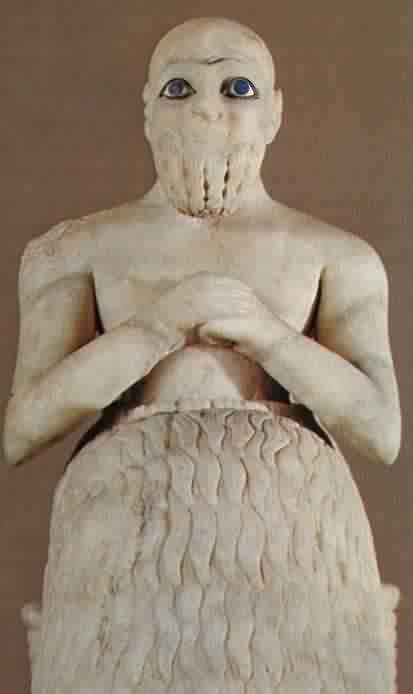

Science, including medicine, has a very long history in the Middle and Near East. Its origins go back to the ancient Mesopotamian period beginning with Sumerian civilization around 3,000 BC. There are many cuneiform tablets from cities as ancient as Uruk (2500 BC). However, the bulk of the tablets that do mention medical practices have survived from the library of Ashurbanipal at Nineveh (668BC) Assyria. So far 660 medical tablets from this library and 420 tablets from the library of a medical practitioner from Neo-Assyrian period as well as Middle Assyrian and Middle Babylonian texts have been published. The vast majority of these tablets are prescriptions, but there are a few series of tablets that have been labeled "treatises". One of the oldest and the largest collections is known as "Treatise of Medical Diagnosis and Prognoses." The text consists of 40 tablets collected and studied by the French scholar R. Labat.
Although the oldest surviving copy of this treatise dates to around 1,600 BC, the information contained in the text is an amalgamation of several centuries of Mesopotamian medical knowledge. The diagnostic treatise is organized in head to toe order with separate subsections covering convulsive disorders, gynecology and pediatrics. To the non-specialist they sound like magic and sorcery. However, the descriptions of diseases demonstrate accurate observation skills. Virtually all expected diseases exist; they are described and cover neurology, fevers, worms and flukes, venereal disease and skin lesions. The medical texts are essentially rational, and some of the treatments, (such as excessive bleeding) are essentially the same as the modern treatments for the same condition.
In these ancient texts, diseases are often blamed on pre-existing spirits: gods, ghosts, etc., and each spirit was held responsible for only one disease in any one part of the body. Ancient mythologies tell stories of diseases that were put in the world by supernatural forces. One such figure was Lamashtu the daughter of the supreme god Anu, a terrible she-demon of disease and death. It was also recognized that various organs could simply malfunction and cause illness. Medicinal remedies used as cures were specifically used to treat the symptoms of the disease, and are clearly distinguished from mixes or plants used as offerings to such spirits.
There were two distinct types of professional medical practitioners in the ancient Mesopotamian city-states. The first type of practitioner is called ashipu, who in older texts is identified as a sorcerer or the witch doctor. One of the most important roles of the ashipu was to diagnose the ailment. In the case of internal diseases or difficult cases the ashipu determined which god or demon was causing the illness. He also attempted to determine if the disease was the result of some error or sin on the part of the patient. He prescribed charms and spells that were designed to drive out the spirit causing the disease. The ashipu could also refer the patient to a different type of healer called an asu. He was a specialist in herbal remedies, and in texts is frequently called "physician" because he dealt with the empirical applications of medication. For example, in case of wounds, the asu applied washing, bandaging, and making plasters. The knowledge of the asu in making plasters is of particular interest.
Many of the ancient plasters (a mixture of medicinal ingredients applied to a wound often held on by a bandage) seem to have had some helpful benefits. For instance, some of the more complicated plasters called for the heating of plant resin or animal fat with alkali. When heated this particular mixture yields a soap-like substance, which would have helped to ward off bacterial infection. The two practitioners worked together and at times could function in both capacities.
Another textual source of evidence concerning the skills of the Mesopotamian physicians comes from the Law Code of Hammurabi (1,700 BC). There are several texts showing the liability of physicians who performed surgery. These laws state that a doctor was to be held responsible for surgical errors and failures. Since the laws only mention liability in connection with "the use of a knife," it can be assumed that doctors were not liable for any non-surgical mistakes or failed attempts to cure an ailment. According to these laws, both the successful surgeon's compensation and the failed surgeon's liability were determined by the status of his patient. Therefore, if a surgeon operated and saved the life of a person of high status, the patient was to pay a lot more as compared to saving the life of a slave. However, if a person of high status died as a result of surgery, the surgeon risked having his hand cut off. If a slave died, the surgeon only had to pay enough to replace the slave. At least four clay tablets have survived that describe a specific surgical procedure. Three are readable and one seems to describe a procedure in which the asu cuts into the chest of the patient in order to drain pus from the pleura. The other two surgical texts belong to the collection of tablets entitled "Prescriptions for Diseases of the Head." One of these texts mentions the knife of the asu scraping the skull of the patient. The final surgical tablet mentions the postoperative care of a surgical wound. This tablet recommends the application of a dressing consisting mainly of sesame oil, which acted as an anti-bacterial agent.
It is hard to identify some of the drugs mentioned in the tablets. Often the asu used metaphorical names for common drugs, such as "lion's fat" (much as we use the terms "tiger lily" or "baby's breath"). Of the drugs that have been identified, most were plant extracts, resins, or spices. Many of the plants incorporated into the asu medicinal repertoire had antibiotic properties, while several resins and many spices have some antiseptic value, and would mask the smell of a malodorous wound. Beyond these benefits, it is important to keep in mind that both the pharmaceuticals and the actions of the ancient physicians must have carried a strong placebo effect.
Patients undoubtedly believed that the doctors were capable of healing them. Therefore, visiting the doctor psychologically could reinforce the notion of health and wellness. Temples belonging to gods and goddesses of healing were also used for health care. Gula was one of the more significant gods of healing. The excavations of such temples do not show signs that patients were housed at the temple while they were treated (as was the case with the later temples of Asclepius in Greece). However, these temples were sites for the diagnosis of illness and contained libraries that held many useful medical texts. The primary center for healthcare was the home. Most of the healing processed took place at the patient's own house, with the family acting as care givers. Outside of the home, other important sites for religious healing were nearby rivers. These people believed that the rivers had the power to care away evil substances and forces that were causing the illness. Sometimes a small hut was set up either near the home or the river to aid the patient and their families.
While many of the basic tenants of medicine, such as bandaging and the collection of medical texts began in Mesopotamia, other cultures developed these practices independently. In Mesopotamia many of the ancient techniques became extinct after surviving for thousands of years. It was the Egyptian medicine that seems to have had the most lasting influence on the later development of medicine, through the Greeks. In the fifth century BC, the Greek historian and traveler Herodotus commented on current medical practices in Egypt; "the art of healing is with them divided up, so that each physician treats one ailment and no more. Egypt is full of physicians, some treating diseases of the eyes, others the head, others the teeth, others the stomach and others unspecified diseases".
The ancient Egyptian texts of the Old Kingdom (2,635-2,155 BC) contain at least 50 physicians, mainly from their names on the individual tombs. The later periods also give detailed information about physicians and their practice. Although most physicians were men, female physicians existed as well. The title Lady Director of Lady Physicians proves the existence of a group of women who practiced as doctors. Physicians were literate, some were scribes and others were priests at the same time. Most inherited the profession from their fathers but needed to be trained in the field. The profession was organized hierarchically with the Chief Physician at the top and the lesser titles following, such as Master of Physicians, Director of Physicians, Inspector of Physicians, Plain Physicians and auxiliaries such as Bandage personnel, etc.
Texts deal with diagnosis, treatments and prescriptions. Surgery and mummification processes that were used by the ancient Egyptians still amaze modern experts. All the major and common diseases are known and treated. Ailments are attributed to spirits, ghosts and revenge by gods and goddesses. Texts dealing with gynecology cover fertility, sterility, pregnancy, contraception and abortion. Women were tested to decide whether they could conceive or not. However, the Egyptians were behind Babylonian doctors who had gone further and designed the first pregnancy tests known in history. This test involved placing in the womens vagina a tampon impregnated with the juice of various plants in a solution of alum. This was left in position either overnight or for three days. Pregnancy or non-pregnancy was indicated by color changes between red and green. The test used the pH value of the womans secretions in her vagina to determine her pregnancy status.
Rational thinking and sound medical observation were used alongside magic and sorcery. Magic was based on the assumption that an object with certain qualities, or an action of a certain kind, could be used to create sympathetic action (healing) or to repel something evil. Magical elements were included in medical texts and were added to the prescriptions and medicines appropriate for the treatment of diseases. Some conditions like sterility and impotence in men used magic extensively while other easier ailments relied mainly on medicinal treatments. The heart was extensively studied with arteries; however, it is not clear if they fully understood the circulation of blood. In fact, the heart was considered to be the organ of reason instead of the brain, although this later organ was extensively studied as well. Anatomy was well understood and dissection was a common procedure.
There are many medical papyri providing detailed descriptions of surgical procedures and other topics related to medicine. The collections are massive and medical knowledge is organized and detailed. Such organization of knowledge is a prerequisite for major advances in science. Indeed Greeks made extensive use of Egyptian science and medicine and created their own school of medicine that dominated the ancient civilizations for centuries to come. By the time Hippocrates began his scientific medicine in his native city Cos, the city was already the headquarters of the Asclepiadae, a professional association of physicians under the patronage of Asclepius, the god of healing. These practitioners were familiar with Mesopotamian and Egyptian medical knowledge and used such texts extensively. However, the Greeks based their medicine on empirical knowledge and separated the supernatural from scientific information.
The first major Iranian dynasty the Achaemenids (550 BC) promoted the development of culture and science extensively. The great scholars such as the philosopher Heraclitus of Ephesus, the Babylonian astronomer Kidinnu and even the historian Herodotus were Persian subjects. The ancient cultures of the Egyptians, Babylonians, Elamites and others continued to exist and develop. Babylonian physicians were all over the territories and served all people including Persians. Xenophon relates that when the Greek soldiers who served under Cyrus the younger passed through the territory of Babylonia, they found sufficient number of physicianseven in the villagesto treat the wounded warriors. Texts describe how physicians used medicine, prayers and magic. They would often model images of evil spirits out of clay and shatter them, in order to restore the ill to health.
The Achaemenids made Babylon one of their major capitals and extensively used the texts at the temple libraries. The library and museum at the Persepolis was built to rival the Babylonian archives famous in the ancient world. The Greek and Egyptian physicians were invited to join the Achaemenid court and served the royal household. Persians also adopted the tradition of paying the physicians according to their rank and gender. The archives at Persepolis indicate that physicians and midwives who delivered boys were paid double the amount they got when the baby delivered was a girl. The records do not indicate severe punishments if the sick person died, as was the case under Hammurabi. Texts also show lists of plants, herbs and other substances used for medicinal purposes. Drugs are taken internally; mercury, antimony, arsenic, sulfur and animal fats were also prescribed. All are basically the same as the Babylonian medicine and prescriptions.
At one point Darius orders a representative to return to Egypt in order to restore the department of the ruined house of life dealing with medicine: " While his majesty was in Elam he ordered me (Udjahorresne) to return to Egypt. I gave them every useful thing and all their instruments indicated by the writings, as they had been before. His majesty did this because he knew the virtue of this art to make every sick man recover". The subsequent Seleucid and Parthian dynasties followed the same trends with more Greek influence in science and art due to massive presence of Greeks in the area. However, the flourishing of the science and technology happened in the Sasanian period with major centers of learning and the famous university Jundaishapur.
The Sasanian king Khosrow Anoshirvan is mentioned by many historians and biographers to have been a major promoter of all sciences, including philosophy and medicine. In a Pahlavi text (Karnamag) he is quoted as saying the following:
"We have made inquiries about the rules of the inhabitants of the Roman Empire and the Indian states. We have never rejected anybody because of their different religion or origin. We have not jealously kept away from them what we affirm. And at the same time we have not disdained to learn what they stand for. For it is a fact that to have knowledge of the truth and of sciences and to study them is the highest thing with which a king can adorn himself. And the most disgraceful thing for kings is to disdain learning and be ashamed of exploring the sciences. He who does not learn is not wise".
Greek Philosophers, Syriac speaking Christians and Nestorian Christians fleeing persecution by the Byzantine rulers were received by Anoshirvan and were commissioned to translate Greek and Syriac texts into Pahlavi. Paul the Persian dedicated Works of logic to the king. The Greek philosopher Priscianus Lydus wrote a book in response to the kings questions on a number of subjects in Aristotelian physics, theory of the soul, meteorology and biology. The Sasanian religious text Dinkard
shows familiarity with all these topics, especially Aristotelian physics. It is apparent from the text that Aristotles famous article On Coming to be and Passing away was well known by the compilers of Dinkard. Becoming, decay and transformation the three fundamental concepts in the article are mentioned and discussed. Pahlavi texts also indicate that the doctors were paid according to the rank of the patient. Books in medicine, astronomy, Almagest (by Ptolemy), Aristotles Organon and a number of texts in crafts and skills were translated from Greek. Syrian Christians in particular played a significant part in communicating Greek sciences and knowledge to the Persians.
The famous university and the hospital at Jundaishapur built earlier reached its peak at Anshirvans time. The Muslim historian Qifiti (12/13th century AD) in his book History of Learned Men quotes the following; "In the twentieth year of the reign of Khosrow II (Anoshirvan) the physicians of Jundaishapur assembled for a scientific symposium by order of the king. Their debates were recorded. This memorable session took place under the presidency of Jibril Durustabad, the physician in ordinary to Khosrow, in the presence of Sufistai and his colleagues, together with Yuhanna and a large number of other medical men".
It is very likely that the medical teaching resembled those at Alexandria with some influence from Antioch. The Jundaishapur hospital and the medical center were to become the model upon which all future Islamic Medical Schools and hospitals were to be built. Earlier Muslim historians such as Maqdisi (10th century) mention the medical school in Khuzistan and name its famous associates and practitioners. The famous writer and translator Burzoy, who translated the Indian book of fables the Panchatantra (later, Kalila wa-Dimna) for Anoshirvan, was also a well-known physician from Nishapur. The first recorded Muslim Physician Harith bin Kalada had studied at Jundaishapur Medical School.
In Jundaishapur Greek, Indian and Persian scientific traditions were assimilated. Indian scientific material in astronomy, astrology, mathematics and medicine were also translated into Pahlavi along with Chinese Herbal medicine and religion. The books were kept at the university and the royal libraries and Greek medicine based on works by Hippocrates and Galen dominated the discipline.
The later Muslim historians refer to the Sasanian Imperial library as the House of Knowledge (Bayt al Hikmat). The library functioned as both a place where accounts of Iranian history and literature were transcribed and preserved. At the same time it was a place where qualified hired translators, bookbinders and others worked to preserve, purchase, copy, illustrate, write and translate books. It was such texts that made their way into the Islamic period. Many books in sciences and philosophy were translated by the Persians, Greeks, and Syriac and Aramaic-speaking scholars into Arabic and eventually made their way into Muslim Spain and Western Europe. Persia and Byzantium dominated the area before Islam. The latter was a continuation of the Eastern Roman Empire and the seat of Greco-Roman art, culture and civilization. Alexandria and Constantinople were major centers of intellectual activities with theaters, libraries and universities. In addition to Major cities like Alexandria Constantinople and Jerusalem, intellectuals and scientists moved and carried ideas from Edessa in the west, through Nisbis and Mosul (Iraq) to Marv and Jundaishapur in Western Persia.
The conquest of Islam in the 7th century united east and west, improved trade and boasted book publishing by introducing advanced paper making techniques from China. However, major cities and libraries were destroyed, Arabic eventually became the universal language of the empire, and forced conversions into Islam threatened national identities and local cultures. The Imperial library at Ctesiphon was lost; the whole city was totally destroyed and never rose again. The destruction of such major libraries with the rise of Arabic language made it clear to the scholars and intellectuals that all pre-Islamic knowledge and national identities were in danger of total destruction and that they must be preserved. Massive and heroic efforts were made and the result was the formation of a dynamic and significant translation movement for almost two hundred years until the 10th century. The movement started in Damascus in Umayyad times and flourished in Abbasid Baghdad (754 AD). All major surviving Greek, Syriac, Persian and Indian texts were translated into Arabic and Neo-Persian. Pre-Abbasid translations from Pahlavi included major religious, literary, scientific and historical texts.
Nawbakht the court astrologer and his son Abu Sahl and other colleagues Farazi and Tabari and many others sponsored by the Barmakid family (the chief ministers to the early Abbasids who were later murdered) promoted and translated Pahlavi texts into Arabic and Neo-Persian. They were all Iranians and aimed to incorporate Sasanian culture into Abbasid ideology and guarantee the continuity of the Iranian heritage. Christian and Jewish learned families of Sasanian Persia such as Bukhtishu and Hunyan families were also great translators of Syriac, Greek Pahlavi and other texts into Arabic. Both families had served at Jundaishapur University for generations and were instrumental in founding the Adudi Hospital and Medical School in Baghdad.
The Nestorian physician Jabrail Ibn Bakhtishu was the head of the Jundaishapur University when he was called to Baghdad in 148 AD as the court physician to Caliph al-Mansur. He was later charged with building the first hospital (Bimarestan or Maristan) in the city based on the Syro-Persian model already established at Jundaishapur. He went back to Iran, but many members of his family served the Abbasids for a long time.
Baghdad, a suburb of Ctesiphon was built in 762 by al-Mansur. The Royal library at Baghdad was based on the Sassanian model and was also called the house of knowledge (Bayt al-Hikmat) and like the Persian royal library became a center of learning and attracted scientists and intellectuals alike and many of its directors were either Iranian or of Iranian descent. Baghdad itself became hire to the Alexandrian and Persian scientific traditions and thought. The Adudi hospital was built under the instructions of the great Iranian Physician Razi (Latin Rhazeshe was from Ray) and resembled the great hospital in Jundaishapur. It is said that in order to select the best site for the hospital he had pieces of meat hung in various quarters of the city and watched their putrefaction and chose the site where the putrefaction was the slowest and the least. At its inception, it had 24 physicians on staff including specialists categorized as physiologists, oculists, surgeons and bonesetters. Various historians have mentioned that the hospital was like a great castle with water supply from the Tigris and all appurtenances of Royal Palaces.
Medicine remained dominated by the Greek tradition, the first to rid the science of supernatural powers and spirits. Around 450 BC, the Italian-born Greek natural philosopher and physician Alcmaeon began forwarding the new theory that disease was caused by a fundamental imbalance in the body between certain opposed qualities, such as heat and coldness (sardi/garmi), or wetness and dryness (tari/khoshki). This theory was picked up and elaborated by Hippocrates (460-377BC) who completely disregarded the presumption of the spiritual causes of disease. He proposed that health resulted from the equal influence of four bodily "humours" that was analogous to the four elements of Greek physics (earth, water, air and fire). Blood, phlegm, and two kinds of bile were associated with four major organs: heart, brain, liver and spleen and with the four seasons and the four ages of man: childhood, youth, maturity and old age. Deviations from perfect balance among the four produced diseases. Therapies consisted of attempting to restrain the overactive mood while encouraging the others.
Five centuries later, the great Greek physician, Galen (130-200AD) concluded that blood was manufactured in the liver from material provided by the stomach. He also posited two other systems of essential fluid. One originated in the heart and was carried by the arteries. The other anima (soul or the life principle) proceeded from the brain by way of the nerve tracts. Although none are correct, nevertheless Galens meticulous anatomical studies and logical method provided a point of departure for the development of modern medicine. Once this Greek heritage and knowledge was translated into Arabic it became universal and replaced most of the older traditions and schools. Greek, Persian, Arab and Indian scholars refined the assimilated ideas and by the 12th century advances were made toward understanding the organic cause of disease. Most of the physicians of the golden Age of Islam came from Iran, Egypt, Syria and Lebanon. The brilliant Iranian scientist Razi (845-925 AD) distilled alcohol and clearly distinguished smallpox from measles.
The celebrated Iranian physician and philosopher Avicenna (Ibn Sina, 965-1040) wrote 100 books on many subjects including his most famous compendium, Canon of Medicine. His magnum opus is one of the classics of medicine. He extensively studied herbal medicine from China, India and Persia. Avicenna, like his predecessor Farabi (another well-known Iranian), was an outspoken empiricist and insisted that all theories must be confirmed by experience. He argued against the blind acceptance of any authority and improved distillation techniques.
-------------------------------------------------------------------------------------------------------------
The Sudden Civilization
The Antiquities Department reported that French archaeologists have recently unearthed a new Sumerian temple in the southern Province of Dhiqar, Iraq.


Dhiqar, of which the city of Nasiriyah is the provincial capital, is Iraqs richest in archaeology. It is the birthplace of the Sumerian civilization, the first to invent writing and civilized government some 5,000 years ago. A question that has fascinated archaeologists and historians for centuries is just who were the Sumerians, the sudden civilization that appeared in full swing in Mesopotamia over 5,000 years ago? The Sumerians and their civilization virtually erupted from nothing. There was nothing else like it before them and then suddenly you have a highly detailed and advanced society.
The answer to the 'why' may well have been found in their writings, which are extensive and which cover all areas of life; from science to government records, from stories to mathematics, and from history to astronomy with everything in between. It took a long time to decode it, but, once done, it was found to contain many references to gods and allusions to other manifestations of a highly advanced race of beings. They were already aware of the existence of Venus, and could measure planetary cycles of over 26,000 years. Sumerian ruins such as Eridu, Ur and Lagash top Iraqs archaeological attractions. Despite decades of excavations, only a fraction of the provinces ancient marvels has come to light.
Mysteries of ancient Sumerian civilization

Scientists have proved that the Sumerian civilization is the oldest on Earth. She appeared about 445,000 years ago. Where it came from is unknown, but it is clear that the Sumerians were highly nation possessed knowledge in the field: chemistry, physics, astronomy, modern mathematics idazhe knew the basics of genetic engineering! Akroma that they had their own state, a sort of Deputies, and even sudebnayavetv. In addition, the Sumerians knew ozagadochnoy planet Nibiru, which was so until recently. Sensational discoveries two years ago, astronomers did, finding a few fragments of unknown celestial body, which correspond to the orbit of the planet Nibiru.
If you believe the Sumerians, the planet Nibiru was located between Jupiter and Mars, according to their calendar onayavlyalas twelfth planet solar system. Nibiru was populated by intelligent beings – Anunaki, contact skotorymi had shumeriytsy. The average life expectancy was about 360 Anunaki tysyachzemnyh years. Shaking and the growth of these men, for women it was about 3.5 meters and 4.5 umuzhchin. The inhabitants of Nibiru priletelina Earth in search of minerals, particularly gold. His prey they were doing about 150 thousand years, poslechego revolt, they are tired of working for years in a dungeon, then it was decided to create a human clone.According to the Sumerians Anunaki able to translate our plans into reality, so there were people.
Modern scientists confirm the fact that between Saturnomi Jupiter must have been some toplaneta, and its size is 2 times larger than ours. Shumeriytsy noted that Nibiru was killed in a collision with another planet, perhaps even with Jupiter. It happened something like Star Wars, but the war in the literal sense of the word did not happen, happened usual clash poslechego Nibiru has been there. Even scientists confirm nebesnuyubitvu, which occurred four MLR. years ago. Finally, we note that fragments of alleged Nibiru must pass through the solar system between 2100 and 2158 years.
blogger Mysteries of ancient Sumerian civilization digg Mysteries of ancient Sumerian civilization livejournal Mysteries of ancient Sumerian civilization linkedin Mysteries of ancient Sumerian civilization orkut Mysteries of ancient Sumerian civilization reddit Mysteries of ancient Sumerian civilization tumblr Mysteries of ancient Sumerian civilization share save 171 16 Mysteries of ancient Sumerian civilization




Rajaraja Chola
BANNED

- Joined
- Sep 5, 2010
- Messages
- 9,051
- Reaction score
- -3
- Country
- Location
Sumerians—the first humans to establish systems of writing, agriculture, and government
Akkad World's first empire

This last pic looks like a hindu temple from TN or india...
U sure its sumerian civilisation cos the GOPURAAS are a thing famous in india and othre SE asian architecture...??
The SC
ELITE MEMBER

- Joined
- Feb 13, 2012
- Messages
- 32,233
- Reaction score
- 21
- Country
- Location
2000 years Before Christ, Travel for barter was an important affection aback the alpha of civilisation. The anchorage at Lothal was an important centre of barter amid the Indus basin civilisation and the Sumerian civilisation.


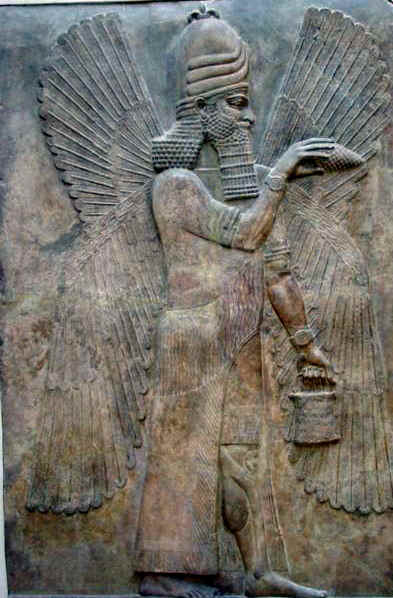

Sumerian Art from the Royal Tombs of Ur
Royal Tombs of Ur - Sumerian Art








Sumerian Art from the Royal Tombs of Ur
Royal Tombs of Ur - Sumerian Art




Supply&Demand
FULL MEMBER

- Joined
- Apr 13, 2012
- Messages
- 1,354
- Reaction score
- -10
- Country
- Location
This last pic looks like a hindu temple from TN or india...
U sure its sumerian civilisation cos the GOPURAAS are a thing famous in india and othre SE asian architecture...??
He must have used a wrong pic...that is a Hindu temple from South India.
Machete
BANNED

- Joined
- Mar 28, 2012
- Messages
- 163
- Reaction score
- 0
The above one is Tanjavur Praghadeeshwarar Temple ,TN ,South India. Hw come it come under sumerian civilisation?
Similar threads
- Replies
- 0
- Views
- 258
- Replies
- 4
- Views
- 226
- Replies
- 5
- Views
- 477









